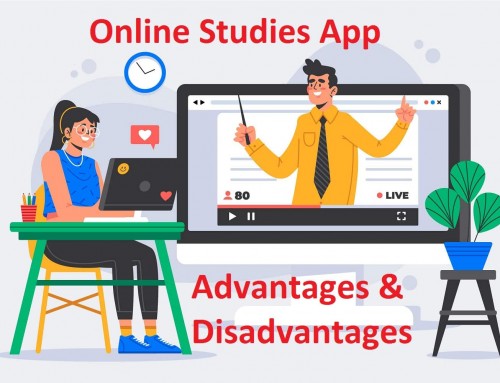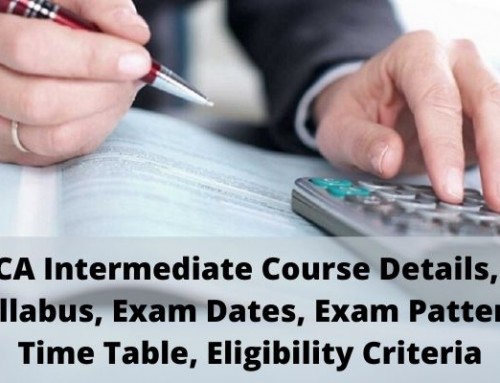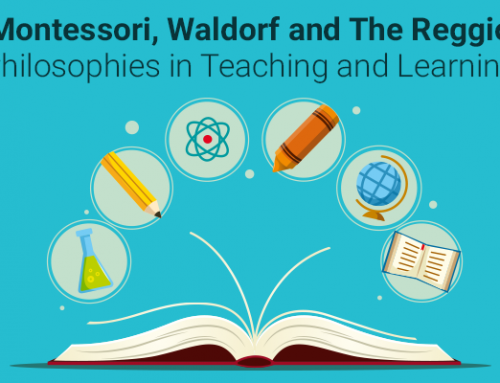1. Abstract
“A mediocre teacher tells, a good teacher explains, a superior teacher demonstrates, a great teacher inspires.”
Educators in India have been wrestling with a shortage of talented teachers, increasing student faculty ratios, the ever increasing number of technology solutions available for the classroom and a dramatic increase in the availability of free education resources in the hands of parents and students.
This white paper looks at some of the key challenges faced by educators. It also takes a close look at the pitfalls in the adoption of technology and the market scenario today.
An ideal Ed Tech solution should enable personalized learning and self-motivation for each and every student. This paper examines the potential of Ed Tech to enable this. It also provides a checklist for educators to select their technology provider.
2. Key Challenges for Educators
Education is on the cusp of evolving from traditional methods of teaching to ‘Guide by your Side’ approach.
Schools traditionally have been entrusted with the responsibility of
- the development of the natural talents of students,
- academic performance of students by
- helping students grasp difficult concepts,
- improving students’ performance in tests
Let’s take a look at the context and the key challenges for educators when selecting an appropriate Ed Tech solution.
- Student Teacher Ratio
Lack of quality faculty, faculty attrition, escalating cost of
managing and maintaining a classroom and the increasing student population ensure that student to teachers ratios are
consistently on the rise.
Approximately only 10-15% of the teachers’ time is spent on improving the performance of the student. This is because a large percentage of the teacher time is spent on teaching concepts, admin related work, paper setting, paper evaluation etc.
- Curriculum and ability to cover the syllabus in a fixed time
The effective teaching time available to teachers is lesser in schools because of the need to focus on the all-round development of the student through a large number of extracurricular activities. Within this limited time, teachers also face the pressures to cover the syllabus and improve performance of all the students as they move to the higher grades.
- Availability of Free and Paid Content
There are multiple content providers in the market with an emphasis on concept building. In the absence of parent/student education, there is an increasing tendency for students to look at multiple modes of instruction, one at the school, second at the coaching classes and a third is through these content providers.
With these factors in play, the pressure is increasing on educators in school to figure out the right solutions that would prevent students and parents from being confused by the multiple ways of the same concept being taught to the student.
The next section looks into the common pitfalls involved in the selection of the right education technology solution.
3. The Pitfalls
The myriad space of technology solutions to help improve learning outcomes makes it increasingly difficult for educators to identify the right fit for their schools. There are essentially three key areas that educators look at for improving learning outcomes in schools.
- Content: There are multiple and different kinds of content available in the market. In addition, content is continuously created by teachers whether it is in the form of notes, assessments or the content being delivered to students in class. The classic conundrum for educators is first a build versus buy decision. It is difficult to gauge whether a content maps to the curriculum or whether it maps to the need of the students etc. The amount of teacher involvement needed to decide on the content quality also acts as a detriment in this process.
- Technology: The decision here happens considering the hardware, software and infrastructure related requirements. The decision making process is complicated further by rapid changes in technology and the risk of obsolescence.
- Localized Solutions: Investments in creating a smart class are usually restricted to adding a projector, whiteboard, playing animations, presentations etc… It addresses only the pain point related to demonstrating concepts. A holistic solution and approach to providing personalized learning and measuring and improving learning outcomes is many a times missing.
- Impact on Existing Workflows: Eventually Ed Tech solutions have to be adopted by all the different stakeholders such as teachers, students and parents. It is a change management process that needs to be carefully managed.
4. Market Scenario
There are essentially three kinds of solution providers that are available:-
- Technology Companies: With an increasing number of technology companies now arriving into the education space, there are a myriad number of solutions provided to make content delivery seamless to students and teachers alike. There are providers of LMS solutions. Then they aggregate content from multiple sources, with no uniformity in content provided. However a delivery solution while important from an operational perspective misses the fact that content, fitness to pedagogy which are purely in the education domain are equally or more critical to a better learning experience. Analytics can work great only in the presence of great content. There is also the challenge of technology being intrinsically coupled to certain content providers limiting the content choices available to teachers.
- Content Providers: Traditionally textbook publishers were the content providers that were closely involved with the school eco-system. With the arrival of eBooks and other education technology, the traditional textbook publishers have made an effort to incorporate technology into their offerings. The movements such as reducing the burden of books that students carry to schools have further increased the pressure on the publishers to move to paper-less books (eBooks). However there are two major challenges that traditional content providers face.
- The content design is currently built from the perspective of a printed book. However traditional devices in the market do not replicate the same reading experience as a printed book. Just converting the printed book to a mobile friendly format for easy delivery misses the nuances of editorial work done to ensure a great book reading experience.
- The content providers don’t necessarily have the strengths of a pure play technology company. As a result ensuring seamless delivery of content is one of the challenges for pure play content providers.
- Retail Education Technology Providers: There is the third set of new players in the eco system that provides content and technology directly to students and parents. The purchase is done directly by students and parents who understand little about fitment and pedagogy. These players also provide for generic content adding to the confusion of students and parents alike on the right approach to understanding concepts and solving problems.
| Technology Provider | Content Provider | Retail Ed Tech | |
| Content | No | Yes | Yes |
| Technology for Delivery | Yes | No | Yes |
| Built for school eco system | Yes | Yes | No |
Moving into the next section we will be looking at a checklist that should be helpful for an educator interested in making an investment in the Ed Tech space and to take informed decisions when bringing in a new provider.
5. Checklist for choosing your Ed Tech solutions provider
Content
- Is the content homogenous and consistent in visual and instructional design?
- Is there continuity between the different content nuggets?
- Are the content nuggets thoroughly mapped to Curriculum?
- Is the content correct?
- Is the content effective in achievement of learning objectives?
- Does the content provide all three components: teaching, evaluating and conducting analysis?
Technology
- Is the Technology too cumbersome to adopt?
- What is the risk of obsolescence of technology?
- What is the Manpower needed to manage and maintain the solution?
- Judge adaptability level with respect to the solution
- What types of diagnostic reports are available for different stakeholders?
Keeping the above points in mind, let’s take a step back to look at what an education technology solution for a school should look like.
6. The Ideal Ed Tech Solution
The ideal Ed Tech Solution should provide for personalized learning and self-motivation for each and every student.
Based on Ellen Langer framework of self-motivation, the ideal Ed Tech solution should provide students with
- Choice
- Competence
- Consequence
- Community
When overlaid with the learning cycle of Teach, Evaluate and Analyse, the ideal Ed Tech solution can become a powerful transformational tool for each and every student.
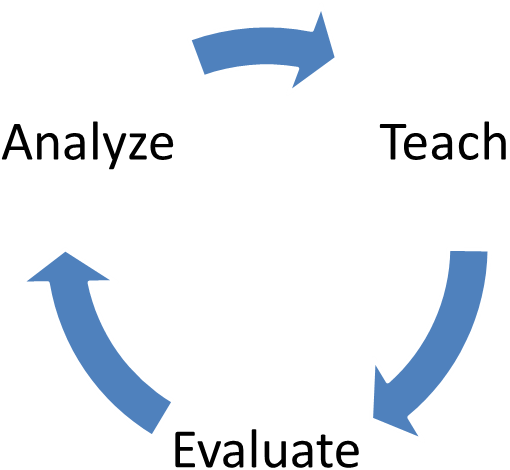
| The 4 Cs of Motivation | Teach | Evaluate | Analyse |
| Choice | Learning Pace and Teaching Style set as per student | ||
| Competence | Build competence and confidence of students by encouraging Self Study, testing through Formative Assessments followed by Summative Assessments | ||
| Consequence | Get immediate and specific Feedback for improvement | ||
| Community | Learn concepts, Solve problems with the rest of the student community | ||
- Choice: Each student should have the possibility of learning at their own pace. The content should cater to different learning styles of students. At the same time, the teacher should be able to cover the curriculum for all the students in the class. For this to happen, the teacher can act as a catalyst in increasing the pace of the student learning. This can happen when the teacher gets detailed feedback on students’ strengths and weaknesses.
- Competence: The tests difficulty level should adjust as per the competence of the student. This requires that the teacher be involved in creating a large number of Formative and Summative assessments of different difficulty levels to test the students.
- Consequence: The student should get immediate feedback for accelerating the learning cycle. The solution should reduce the time between action and consequence for the student to be able to improve rapidly in the mapped competency areas. The teacher should help the student by providing for remedial content and direct necessary action towards weak areas of the students.
- Collaboration: Students learn the best when they teach and help other students. With the teacher acting as a moderator for the groups, students can feel as being as a part of a community in the achieving learning objectives.
Apart from this, the ideal Ed Tech solution should help parents become active partners with the teachers in the development of the child’s innate talents and gifts.
For administrators the solution should help them objectively gauge
- improvement in performance on learning outcomes of students year on year
- gauging improvement in teacher performance year on year and
- conduct active focussed training for improving performance of teachers
The following section looks at Robomate+, an Ed Tech solution built for achieving the above ideal.
7. Robomate+
Let’s relook at the framework of the ideal Ed Tech solution overlaid with the features of Robomate+.
| The 4 Cs of Motivation | Teach | Evaluate | Analyse |
| Choice | Robomate+ AV Lectures,
Robo Books, End of Module Tests, End Of Chapter Tests |
RoboAnalyze | |
| Competence | Robomate+ Assess | ||
| Consequence | Robomate+ Performance Reports | ||
| Community | Robomate+ Study Groups | ||
Robomate+ has Audio Visual Lectures and eBooks mapped to the curriculum which enable the teacher to transition students to a learn mode. This happens with the student studying at home through a seamless delivery eco system that enables both online as well as offline learning.
The formative assessments are built right into the content to enable a student to practice well in advance of arriving to the classroom.
These details are then sent to the teacher before the class to enable focussed teaching.
Through RoboAssess, teachers can also build their own content, create their own questions for evaluating students on the understanding of the topic. It also helps in evaluation of both subjective and objective question papers directly substantially reducing the lag between taking of the exam and providing the feedback to the student.
Through RoboAnalyse, teachers can have a detailed view the areas of strengths and weakness of each student at a concept level. Thus, teachers can look at what concepts to specifically emphasise on when it comes to different classes.
And all of this is seamlessly interwoven into a lesson planning system that enables teachers to tailor the pace of the curriculum coverage to navigate the students through the entire curriculum within the time available.
Provided below is the way the students, teachers interact within the Robomate+ ecosystem.
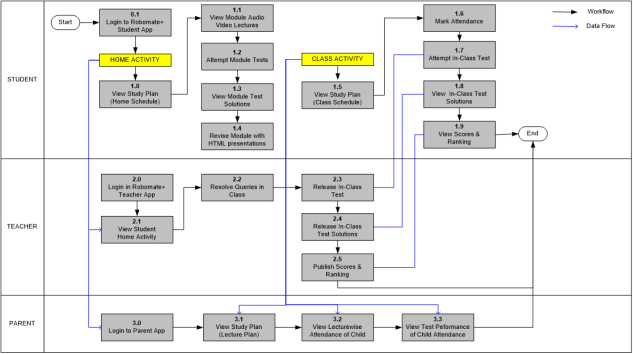
8. Conclusion
The choice of Ed Tech solution is a complicated one. Myriad solutions and the complex context involving multiple stake holders make the choice all the more challenging for educators.
With a more holistic approach to the adoption of technology solution, educators can now move towards setting up an ideal environment where they can help each and every student achieve their potential within the school eco-system.
Whitepaper Authors: Rahul Mahurkar, Narendra Sannabhadti
Date: 29th Jun 2017
Company Name: Robomateplus Private Limited




